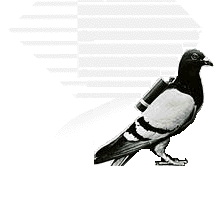 Whenever I travel, I enjoy exploring down random streets, much in the same way I walk a library or book store.
Whenever I travel, I enjoy exploring down random streets, much in the same way I walk a library or book store.Yesterday, as my wife and inlaws toured Buckingham Palace here in London, I wandered down The Mall, a main thoroughfare that leads toward Trafalgar Square and The Strand (famous for its many used bookstores).
Along the way I stumbled across an exhibit at the Institute of Contempory Arts entitled, "A Recent History of Writing & Drawing." How could I resist? I paid my two Pounds ($4.00) and entered a small single room filled with various odd writing contraptions.
The exhibition, produced by programmer-artists Jurg Lehni and Alex Rich, utilizes complex technology and mechanics to produce unexpectedly simple forms of writing and art.
One interactive exhibit that caught my eye was a computer terminal that allows you to type in a limited number of letters and words, and then when you pressed print it printed your creation on a large format printer, but instead of ink on paper the words were formed by a predetermined number of hole punches.
 My masterpiece is shown at left (hanging chads and all), kindly displayed by my unwitting co-collaborator, the friendly docent manning the room.
My masterpiece is shown at left (hanging chads and all), kindly displayed by my unwitting co-collaborator, the friendly docent manning the room.Another interesting exhibit consisted of a large chalkboard, with small motorized pullies mounted in each of its four corners. Through the pullies ran cabling, which met in the the middle of the chalkboard attached to a contraption with a large piece of chalk. The purpose here was for the four independent pullies to work in unison to move the chalk in such a way that it drew a picture. The system's output is shown at below.

What's the purpose of all this?
According to the handout, "The themes of the installation are the untapped potential of everyday technologies, their capacity to execute functions not foreseen by their designers, and the unintended poetic qualities of certain means of communication. "
Like most modern art, I suppose it also intends to touch you in some way, or maybe make you think about something in a completely new light.
The exhibit runs through the 31st of August. Click here for more information.
I'm in London for a few more days, so if any Smashwords members out there want to meet for cool drink in the Covent Garden area, drop me a line at first initial second initial at you know where dot com.





















